As it gets increasingly more difficult to read or watch the news (I could put a long list here of everything that is so very wrong with the world at the moment, but I think I would run out of space), I would recommend going to the GWL. Well of course I would, I would be a poor blogger for the library if I didn’t. However, this time I would very much recommend heading over to the library because the exhibitions that are currently on display are a comfort and a reminder of how to cope with conflict, when it feels like that’s all we currently experience or witness.
Conflict, really, is at the heart of each of the exhibitions, but don’t let that put you off visiting! Whilst each is inspired in some way by oppression and struggle, each is also a welcome inspiration for how to overcome challenges and cope with the status quo. Whether that’s Maud Joachim’s hunger strike medal reminding us that your struggles are seen and that action does lead to change, or Project Esperanza’s beautiful and eclectic Eve/Hawa Quilt demonstrating that you can find space for joy and elegance in amongst the mess of experience; each is a bright point to enjoy.
I certainly found my general anxiety starting to be quelled as I walked around the GWL, just absorbing the messages from each display, even with all the hubbub of a typical Friday afternoon at the library going on in the background. I’d like to share with you some of what I took away from each exhibition, but this will be no substitution for seeing the real thing!
We Deserve A Medal: Militant Suffrage Activism
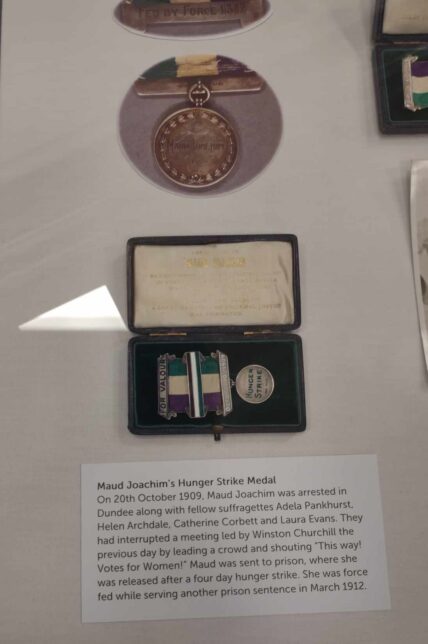
I’ll start with the highest profile item in the library: Maud Joachim’s hunger strike medal, awarded to her in 1909. This was successfully acquired by the GWL through an intense fundraising campaign in 2023, when the medal was up for auction in London. This marked a significant departure from the usual GWL approach as this is the only item that has been purchased by the library – everything else comes from donations. In order to get a bid together, GWL received a grant from the National Fund of Acquisitions and then received donations from 544 generous crowdfunders, managing to win the auction.
The medal is now on display in the main area of the library, along with two other hunger strike medals (on loan), which were awarded to Margaret and Frances McPhun in 1912. Also part of the display is a very amusing satirical drawing from a 1911 newspaper, as well as some interesting bits and pieces, such as a PANKO Card Game, which was advertised by the WSPU. Although Maud’s medal is definitely the most talked about item, given the saga the library went through to get it, each item reveals little tit bits of information that you probably didn’t know about different Suffragettes and their experiences. For example, I didn’t know that Maud Joachim was arrested and went on hunger strike after interrupting a meeting that Winston Churchill attended in London, which is definitely an interesting fact! You’re sure to learn something new, and the exhibition highlights the rounded experience of the Suffragettes, rather than just focussing on one aspect, like the hunger strikes.
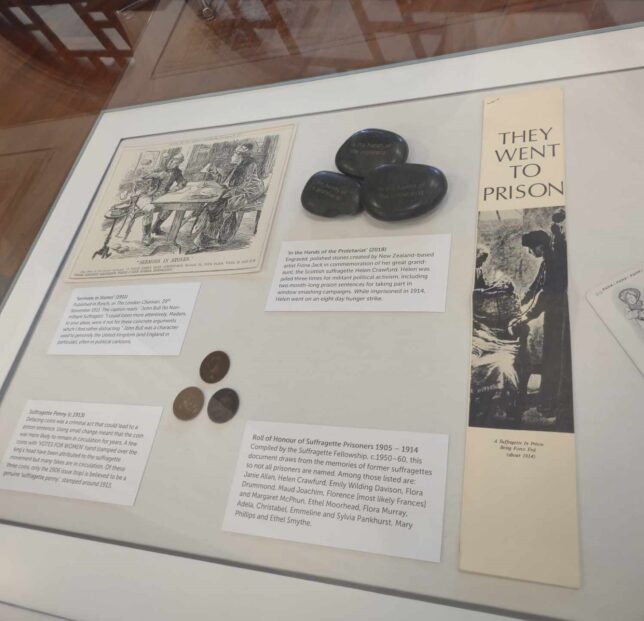
The conflict for the Suffragettes is apparent in the exhibition, with the medals being related directly to the ordeal that the women went through as part of hunger striking. There is also the larger picture of the fight to gain the right to vote and the blatant discrimination that women faced during that struggle. However, what is also apparent is resilience, bravery, and humour. As well as the satirical newspaper drawing, there is a ‘Roll of Honour of Suffragette Prisoners’ from 1905-1914, coins defaced by those who supported the vote for women, and pictures of a recreational march in 2015. These pieces of history attest to the wide range of emotions that are associated with the journey of these women. By looking at the whole picture and appreciating the struggles within their wider context, we can find inspiration to deal with the challenges we currently face and hopefully not repeat the struggles of the past.
Project Esperanza’s ‘Eve/Hawa Quilt’
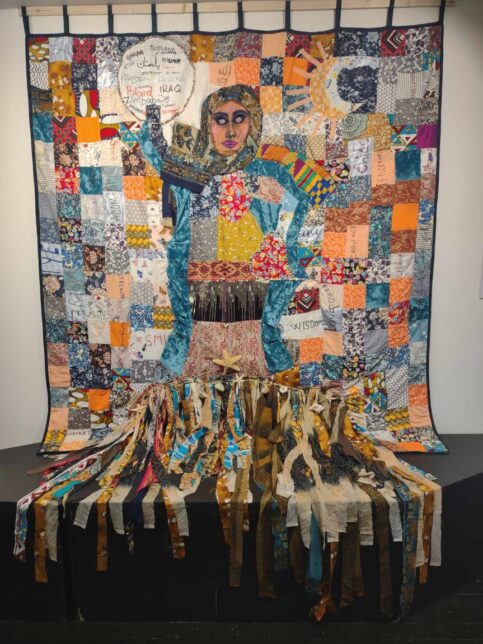
This captivating quilt draws you in when you step into the GWL events space. On this patchwork piece, a woman with a mermaid-like ribboned dress stands facing the viewer against a background of patches. She’s holding up a sign containing the names of the different countries that the contributors have come from. The whole piece is an explosion of colour, with each patch made from a different material, some with words on, which range from ‘strength to ‘challenge’. I couldn’t help but smile when I saw it, as the quilt has a fun and joyous quality to it, but it also represents something much deeper.
Project Esperanza is an Edinburgh-based group, led by women, which supports women of African and diverse cultural backgrounds through specialist services and culturally appropriate means. They provide wellbeing and integration services, human rights advocacy, and do youth work too. This quilt was born out of project to give women in the group a space to express their experiences of racism, trauma, migration, and acceptance. The piece engages with challenge, resilience and, most positively, healing. By placing the quilt in what was the ‘men’s reading room’ in the library, the GWL centres these women’s stories in the space and subverts expectations around its subject matter, prioritising the voices of these women. There is also a lovely subversion in using skills traditionally associated with women, such as patchwork and sewing, to reclaim experiences of struggle and oppression. Using these experiences to create a soft quilt emphasises how exposed these women must have felt in reckoning with their own pasts and in choosing to share with the public the challenges and discrimination they’ve faced.
Although many of the conflicts that these women have faced are not ones I have experienced myself, I am inspired by the way in which the women of the group have focussed on acceptance and have concentrated on the idea of positive moments ahead, which really shines through the quilt. My favourite patch was the one that says ‘joy’ on it – sometimes you have to be reminded to find joy and this quilt definitely did that for me.
Poetry in Protest
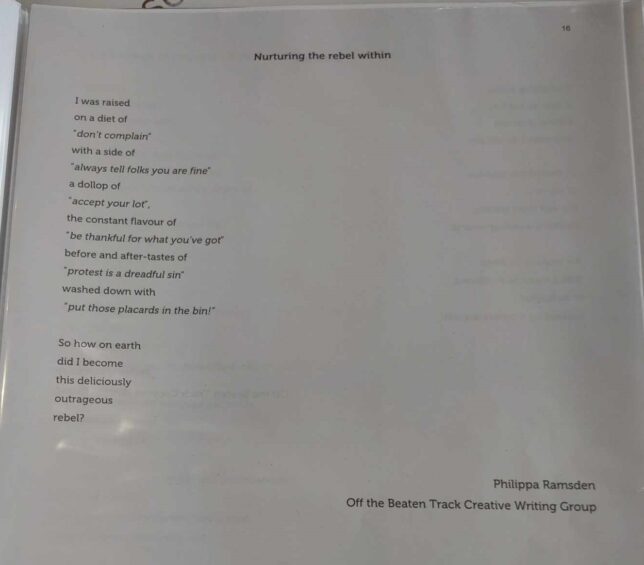
This exhibition is housed in the upstairs gallery in the library, next to the community room. There are poems scattered about the room – mostly concentrated on one wall and within a book of laminated pages – which are all written by women in Scottish creative writing groups in response to Jackie Kay’s poem ‘A Life in Protest’ (which was commissioned by Art UK to mark the 30th anniversary of GWL). There is a speaker playing (in a random order) the poems housed in the book, which range in length and content. However, all of the poems share a desire to tell of experience and to speak to a collective of women, no matter where those women might be from. There are poems about being a parent, about attending protests, about activism, about how to dress…but above all, each poem is about voice and speaking a truth.
The creative writing groups that supported the women writers are run by Open Book, which runs groups across Scotland. Open Book also run reading sessions and arrange visits to different literary events across Scotland, cultivating diverse and inclusive spaces for women to develop their relationships with the written word. If you’re interested, the GWL hosts an Open Book group (see here) but they are very popular so make sure to book early! The groups are clearly supportive spaces where women are encouraged to express themselves freely – you can see this in the powerful and varied poems in the collection.
My favourite poem is ‘Nurturing the rebel within’, which discusses what women are taught to say rather than what they want to say. As someone with anxiety and a fear of confrontation, this one really resonated with me. The opening lines ‘I was raised/ on a diet of/ “don’t complain” are striking on the page and speak to the internalised angst of feeling like you have to be a polite British woman, rather than speaking your mind and expressing yourself. I would recommend taking your time to peruse the collection of poems and seeing how each one responds to the theme of protest. All of the poems remind us that you can protest and speak up, even when you feel the weight of different oppressions on you.
Final thoughts
Go to the GWL! But specifically, if you want to feel inspired in an age of shock-factor media and constant strife (someone is always suffering somewhere), or if you want to feel empowered to do anything differently – whether that’s writing some thoughts down, becoming an activist, or even doing the dishes that have been piling up – then take a look at how the women featured in these exhibitions coped with the challenges they faced. Conflict might be at the heart of each of the exhibitions, but so is resilience and survival. And the fact that they’re housed in one of the most welcoming and inclusive spaces can only help. So, head on down to the library, grab a cup of tea and a biscuit, and just absorb what you want from each of the pieces you see. I promise it’ll be worth it.
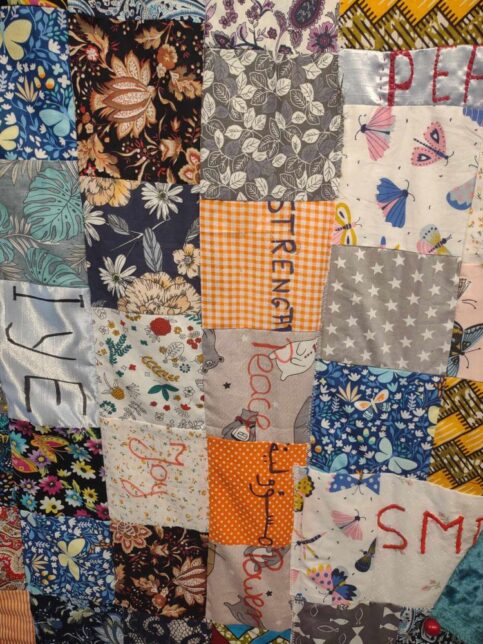

Leave a Reply